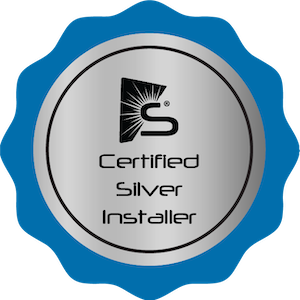The California Public Utilities Commission (CPUC) unanimously approved the long-anticipated Net Energy Metering (NEM) 3.0 on December 15, 2022. This controversial decision will bring major changes to net metering in California.
In this blog, we’ll explain what’s happening to net metering in California and what the changes mean for your home solar installation.
Net Energy Metering: How It Works
Net Energy Metering or net metering is a billing structure that’s offered by utility companies to their solar customers. Under a net metering agreement, solar customers can export the excess electricity their solar panels produce to the electric grid. In return, they receive a credit from their utility that can be used to pay for the electricity they pull from the grid when there isn’t enough sunlight to produce solar power.
Under traditional net metering policies, including California’s NEM 2.0, solar customers are credited at the full retail rate for the electricity they send to the grid. Under NEM 3.0 in California, solar customers will be credited at a lower rate, reducing the value of this longstanding California solar incentive.
What Is NEM 3.0?
California’s NEM 3.0 is a new version of the state’s net metering policy that was approved by the CPUC in December 2022. Net metering 3.0 brings several changes to California’s net metering policy, the most significant being lower solar export rates.
Here’s what will change when NEM 3.0 takes effect:
Lower Solar Export Rates
Under NEM 3.0, solar customers will no longer be credited for the full retail value of the electricity they send to the grid. The new export rates will vary depending on the time of use. The highest rates will be available during peak demand periods, when consumer demand for electricity is at its highest.
Although the lower rates impact the benefits of net metering in California, NEM 3.0 is still a valuable solar incentive for California homeowners, especially those who install battery storage.
Solar Batteries Have More Value
Customers who install solar panels paired with battery storage stand to benefit the most from the new NEM 3.0. Stored solar energy is extremely valuable in California since peak electricity demand times are in the evening after the sun has set, while peak solar production times are in the afternoon. With the new hourly export rates, solar battery users can store the electricity their panels produce during the day and export it to the grid in the evening when rates are high. This helps with grid resiliency and allows solar users to maximize their net metering potential.
NEM 3.0 Is Not Retroactive!
If you are already a net metering participant under NEM 2.0, you don’t have to worry about the changes to net metering in California—NEM 2.0 will be grandfathered. Existing NEM customers will also be able to add battery storage without losing their NEM 2.0 status.
It’s Not Too Late to Be Grandfathered Into NEM 2.0
NEM 2.0 will expire for new solar customers on April 13, 2023. If you submit a completed interconnection agreement without any errors before this date, you can be grandfathered into net metering 2.0 in California for 20 years. To meet this requirement, you will have to act fast! Six Rivers Solar is offering a NEM 2.0 guarantee for residential solar installations that ends on January 31, 2023. After that date, we cannot guarantee your interconnection agreement will be completed in time to meet the grandfathering requirements.










